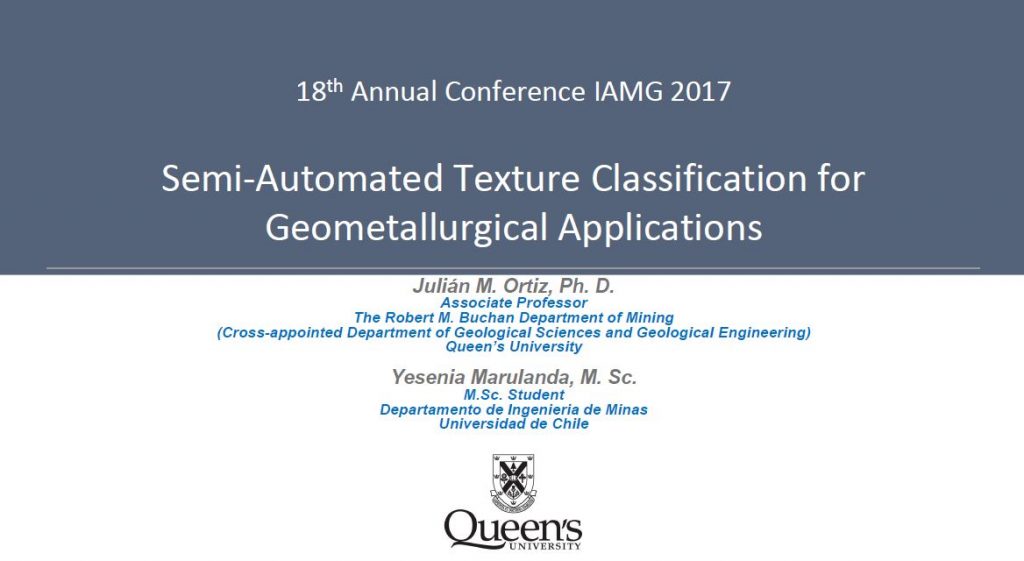 This work was presented at the 18th Annual Conference of the International Association of Mathematical Geosciences – IAMG 2017, in Perth, WA, Australia.
This work was presented at the 18th Annual Conference of the International Association of Mathematical Geosciences – IAMG 2017, in Perth, WA, Australia.
You can see the presentation 2017-09-07-IAMG-Textures.
[su_divider]
Semi-automated texture classification for geometallurgical applications
Julian M. Ortiz (julian.ortiz@queensu.ca) – Associate Professor, Robert M. Buchan Department of Mining, Queen’s University
Yesenia Marulanda (lymarulanda@gmail.com) – M.Sc. in Mining Engineering, Advanced Mining Technology Center, Department of Mining Engineering, Universidad de Chile
Abstract
Geological logging of drillholes usually comprises labeling mineralization zone, alteration type and lithology. Rock texture may be an important feature to complement this information, since texture is often related to the formation stage of the rock and is linked to the rock performance when subject to mining and metallurgical processes. Textures could be used in defining the geometallurgical domains.
We present progress towards semi-automatic texture characterization developed with different image and signal analysis techniques. A pilot test done over high resolution photographic records of drill cores from a porphyry copper deposit, shows that a high rate of correct classification of the textures can be achieved with automated techniques. Training of the algorithms requires a supervised labelling of some reference textures in a number of samples.
The pilot testing proceeded as follows: classification algorithms were developed using a reference library of textures (rock images and labels) of limited size (16 images for 6 classes, for a total of 96 images). The classification approach was then applied to a set of almost 14,000 unlabeled photographs accounting for 150 m of drill hole. The classification was compared with new labels done by geologists for 328 photographs. Some pre-processing techniques over the images were suggested and applied, and classification was repeated, increasing the performance.
Final results indicate that classification match over 70% of the logged textures by the geologists. This indicate that the drillhole information could be populated with texture classes from the photographs at a relatively low cost, adding a layer of information to the definition of geometallurgical units.
